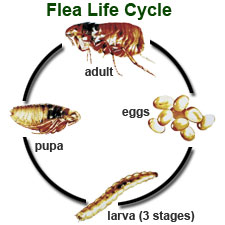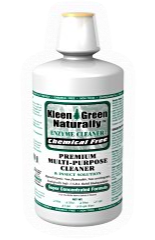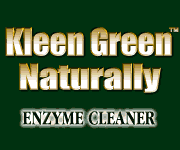- Home
- Fleas - Natural Ginesis
Fleas - Natural Ginesis


Fleas Information
| Common Name | Scientific Name | TESTIMONIAL "I dipped my comb in Kleen-Free and combed though my cat's fur. It was instant death to every flea! The poison didn't even work. Whenever the enzyme touched the flea, they died. I'll never be without this product." JP - North Carolina |
| Cat Flea | Ctenocephalides felis (Bouche) | |
| Dog Flea | Ctenocephalides canis (Curtis) | |
| Northern Rat Flea | Nosopsyllus fasciatus (Bosc) | |
| Oriental Rat Flea | Xenopsylla cheopis (Rothschild) | |
| Rabbit Flea | Cediopsylla simplex (Baker) |
| There are over 2,000 types of fleas in the world. The most common flea you will encounter attacking people and a pet is the cat flea. This flea feeds on cats, dogs, and humans, as well as rodents, chickens, opossums, raccoons, and other animals. The dog flea (C. canis) and the human flea (Pulex irritans) are less commonly encountered. Fact: Two fleas entering a home can become 1 million in just 100 days! Fact: A female flea can consume 15 times her body weight in blood daily. It is estimated pet owners alone spend over $1 billion each year controlling fleas. |
Understanding the flea life cycle

Fleas go through three stages before they become adults (egg, larva and pupa). It can take from 30 days to one year to complete this cycle. The immature stages are most commonly found in areas where the host animal rests and visits frequently. Although eggs are laid on the animal, the eggs fall off and land on surfaces like carpets, furniture, pet bedding, etc. Larvae emerge from the eggs and feed on organic debris and adult flea feces in the carpet or other surfaces. The adult flea is the only stage routinely found on the animal. Adult fleas will live 7-10 days. The average female flea will lay 150 eggs in that time span.
Unlike many other flea species, adult cat fleas remain on their host. After mating and feeding, adult female fleas lay oval, white eggs. These smooth eggs easily fall from the host into cracks, crevices, carpet (the perfect flea environment), bedding or lawn covering. Small, worm-like larvae (1/16 to 3/16 inches long) hatch from the eggs within 48 hours. They are eyeless, legless and sparsely covered with hairs. The larval body is translucent white with a dark colored gut that can be seen through their skin. They feed on adult flea feces, consisting of relatively undigested blood, which dries and falls from the host's fur. They will also eat dandruff, skin flakes, and grain particles.
Larvae develop on the ground in areas protected from rainfall, irrigation and sunlight, where the relative humidity is at least 70% and the temperature is 70 to 90 F. This stage lasts eight to 24 days, depending on the temperature and humidity. These immature fleas will eventually spin silken cocoons in which they will develop (pupate) into adult fleas. Cocoons are sticky, attracting dirt and debris which will easily camouflage them. Under optimal conditions, new adults are ready to emerge from their cocoons within two weeks. They can, however, remain in their cocoons up to 12 months in the absence of a host or in unfavorable climatic conditions. Vibrations and/or elevated temperature stimulate adults to emerge. This ability of flea pupae to wait until a host arrives can result in a sudden increase of adult fleas when they emerge simultaneously from many accumulated flea pupae.
Adult fleas are about 1/16 to 1/8-inch long, dark reddish-brown, wingless, hard-bodied (difficult to crush between fingers), have three pairs of legs (strong legs that enable them to swiftly jump long distances) and are flattened vertically or side to side (bluegill or sunfish-like) allowing easy movement between the hair, fur or feathers of the host. Fleas are excellent jumpers, leaping vertically up to 7 inches and horizontally 13 inches (an equivalent hop for a human would be 250 feet vertically and 450 feet horizontally).
Flea bites
Adult fleas are not only a nuisance to humans and their pets, but can cause medical problems including flea allergy dermatitis (FAD), tapeworms, secondary skin irritations and, in extreme cases, anemia. Although bites are rarely felt, it is the resulting irritation caused by the flea salivary secretions that varies among individuals. Some may witness a severe reaction (general rash or inflammation) resulting in secondary infections caused by scratching the irritated skin area. Others may show no reaction or irritation acquired after repeated bites over several weeks or months. Most bites usually found on the ankles and legs may cause pain lasting a few minutes, hours or days depending on one's sensitivity.
The typical reaction to the bite is the formation of a small, hard, red, slightly-raised (swollen) itching spot. There is a single puncture point in the center of each spot. (Ants and spiders leave two marks when they bite. Mosquitoes, bees, wasps and bedbugs cause a large swelling or welt). Severe diseases can be transmitted by fleas. Bubonic plague can be passed from rodent to rodent and from rodent to humans. Oriental rat fleas can transmit murine typhus (endemic typhus) fever among rats and from rats to humans. Tapeworms normally infest dogs and cats but may appear in humans if parts of infested fleas are accidentally consumed.
How to Use Kleen Green™ to Remove Fleas From Yourself, Your Home And Your Pets
Pets
Suggested Dilution: 1 oz of Kleen Green™ to 7 oz of water
- Bathing for fleas & ticks: Stand your pet in a large container or tub. Wet hair around neck and hind quarters first to prevent fleas traveling to those favorite hiding places. Then soak the remainder of your pet's coat. Using a brush or your hands, gently massage Kleen Green™ as a shampoo over the entire body of your pet and leave on for approximately 3-5 minutes. Rinse completely with warm water. Fleas and ticks will be washed away! Take care to avoid eyes. Repeat, if necessary.
- Spray or bathe pets with diluted Kleen Green™ and wash bedding weekly in Kleen Green™ and/or Borax.
- Use a flea comb on your pet regularly. Dip the comb in diluted Kleen Green™ or soapy water.
- Routinely monitor flea population levels and keep a log of your observations.
- Restrict your pet's access inside your home.
- Note: Kleen Green™ is safe to use on puppies or kittens, whereas poison flea remedies cannot be used on young animals.
Carpets and upholstery
Suggested Dilution: 1 oz of Kleen Green™ to 7 oz of water
- Carpet is the perfect flea environment! Steam clean or vacuum thoroughly every day for two weeks if you suspect flea infestation. This will remove dried blood, carpet fibers, debris, diluted excrement, flea larva and their silk, eggs, pupal cocoons, adults, feces and other food sources.
- Spray Kleen Green™ on and around carpets, rugs, baseboards and floors or use in a carpet cleaner machine.
- Kleen Green™ is safe to spray on furniture, if needed. *As with all cleaners, test Kleen Green™ on an inconspicuous spot for colorfastness. Rinsing or wiping with clean water may be necessary if heavy application is used.
- Use vacuum attachments to clean cracks and crevices. Caulk or seal these openings permanently.
- Most fleas will be killed when dust in the vacuum bag blocks their breathing apparatus; but to be sure, you can vacuum up a tablespoon of cornstarch. The used vacuum bag should be disposed of immediately.
- Dispose of the filled vacuum bags by burning, composting or sealing in a plastic bag.
- Note: In late summer and early fall, flea populations increase. Vacuuming on a regular basis throughout the year will keep developing flea populations low by picking up adult and egg-stage fleas.
Outdoors
Suggested Dilution: 1 or 2 oz of Kleen Green™ to 1 gallon of water (128 oz)
- Spray yards and crawl spaces with Kleen Green™ or salt water (but salt water will kill plants as well as fleas). Reapplication may be necessary after rainfall.
- Use a hose-end applicator and spray the yard with Kleen Green™ to control outside flea sources.
- Sprinkle baking soda, borax or gardener's lime in the yard. Reapplication may be necessary after rainfall.
- Note: 90% of opossums in urban Midwest areas are infected with fleas. Hot summer temperatures (especially when dry) normally prevent fleas from developing. Only shady and moist areas need to be sprayed.

Why and How Kleen Green™ Works
Insects are made up of a high concentration of protein. When Kleen Green is introduced to the insect, the enzymes act and can cause the insect to molt (shed its outer coating) prematurely. Poison pesticides attack the nervous system of the insect, which is not always effective. University research has noted that some insects have developed a resistance to poison based products. This revolutionary product is now available to the general consumer. Preformed enzymes have been used widely in restaurant and institutional settings for the last ten years, due to their low toxicity and superior cleaning properties. They are also becoming widely accepted in the field of pest cleaning as enzymes leave no toxic residues and the enzymatic effect on the insect exoskeleton is quick and safe. SAFE for Gardens, Plants, Ponds and around children and pets!
A Natural Alternative to Toxic Products
- Fast Acting
- Does Not Produce Toxic Fumes
- Extremely Economical
- More Effective and Safer than Pesticides!
Kleen Green: Non-Toxic, Pesticide Free Spray
Super Concentrated - Pesticide Free
- 8 oz makes 2 quarts
- 16oz makes 4 quarts
- 32oz makes 8 quarts
- 64 oz makes 16 quarts
- 128oz makes 32 quarts
- Also available in 5 gallons
THE MOST SUPERIOR NON-TOXIC REMEDY ON THE MARKET TODAY
| INGREDIENTS: Active ingredients: A specially formulated broad spectrum of NATURAL enzymes (protease, amylase, cellulose, lipase) derived from innocuous yeast strains. FDA good grade ingredients. GRAS (FDA Generally Regarded As Safe) List Parts 184 and 186. This product is not a pesticide. |
How to Use Kleen Green™ Enzymes
- This nontoxic product provides superior cleaning in the entire home eradicating and digesting dirt, bacteria and microscopic mites - even dust mites.
- Spray and/or mist cracks, crevices, around window and door frames daily for several days. Persistence and patience will give the best results when using Kleen Green. No need to leave your home like that with pesticides. Kleen Green does not produce any toxic fumes. Kleen Green Enzymes eliminates offensive odors.
- Safe to spray on all surfaces: carpet, bedding, walls, floors and furniture.
- Kleen Green may be used in the laundry and in carpet cleaning machines.
- Pour 1oz. of concentrate directly into wash load without detergent for a fresh clean laundry.
- TIP: Kleen Green is safe to use in humidifiers. Pour 2 to 4 oz. into your humidifier for eliminating odors and controlling air born bacteria, germs and pests.
Sarcoptic Mange
Facts about sarcoptic mange mites
- Sarcoptic mange is a common parasitic skin disease of dogs.
- Sarcoptic mange is caused by a mite that burrows just beneath the surface of the skin. It may also crawl around on the skin surface. This mite feeds on material in and on the skin.
- The sarcoptic mange mite is highly contagious between dogs. Exposure to a dog infested with this mite will likely lead to spread of the parasite.
- The presence of the sarcoptic mite causes severe itching. The dog will chew and scratch its skin constantly. This leads to the loss of large amounts of hair, especially on the legs and belly. Eventually, the skin will become thickened and will take on a darker pigmentation. Frequent scratching and rubbing often leads to secondary skin infections.
- Diagnosis is made by a skin scraping that is examined under the microscope. However, only a small number of mites may be present. Because of this, a dog may be strongly suspected of having sarcoptic mange but multiple skin scrapings are negative. A presumptive diagnosis can be made if the symptoms are typical.
- Age is not a significant factor in sarcoptic mange. Although most common in puppies, dogs of all ages are at risk.
- Although sarcoptic mange is usually a canine disease, the mites can infect cats too.
Non-toxic treatment for dogs, cats, puppies and kittens
Suggested Dilution: 1 oz of Kleen Green™ to 7 oz of water
- Bathing: Stand your pet in a large container or tub. Wet hair around neck and hind quarters first. Then soak the remainder of your pet's coat. Using a brush or your hands, gently massage Kleen Green™ as a shampoo over the entire body of your pet and leave on for approximately 3-5 minutes. Rinse completely with warm water. Take care to avoid eyes.
- Kleen Green™ may also be applied with a spray bottle to any affected area by spraying liberally. Allow coat to dry. No need to rinse.
- Note: Kleen Green™ is safe to apply to puppies and kittens.
- As with all products, please use caution and avoid eye contact.
Prognosis
With appropriate therapy, the prognosis for recovery is excellent. Re-infestation from a contaminated environment or other dogs is possible. Sarcoptic mange is highly contagious to other dogs and can also be transmitted to humans. The dog's bedding should be discarded immediately. The mites are not able to complete their life cycle on humans. Therefore, the mites will die in a few days on a human without treatment. However, they will cause quite a bit of itching before they die.
Disclaimer
All Natural Ginesis products are safe and non-toxic when used as directed. Natural Ginesis is not a substitute for medical advice. The operators of this website and those who provide information for this site do not directly or indirectly practice medicine or dispense medical advice or services through this website. You should not rely on this information to determine a diagnosis or course of treatment, nor should it be considered a replacement for consultation with a physician or other certified healthcare provider. Natural Ginesis and its distributors do not make representations or warranties with respect to any information offered or provided on or through any company web sites regarding treatment, action or application of product. Neither Natural Ginesis nor any of its divisions or contributors shall have any liability for the content, errors or omissions in the information provided by this web site. Neither Natural Ginesis nor its distributors are responsible or liable for any advice, course of treatment, diagnosis, or any other information, services or products that you obtain through this site. Those with health problems, pregnancy or who are nursing are specifically advised that they should consult their physician before taking any nutritional supplement.
Thank You!
 Loading... Please wait...
Loading... Please wait...






 South Africa
South Africa